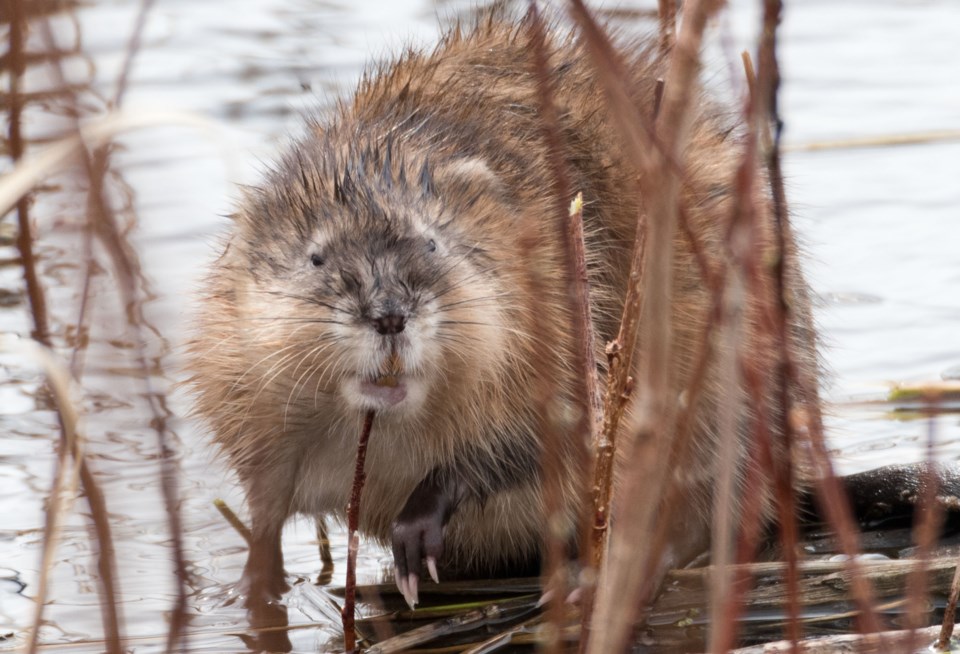Springing to Life results
Spring is late, and so were many of the birds at Big Lake, say local birders. The muskrats, on the other hand, were multitudinous.Up to 50 people showed up during the Springing to Life Bird Count at Big Lake last April 21 and 28, said count co-ordinator Dan Stoker in an email – a large turnout compared to the average of 32. The count, for which Stoker has kept records since 2005, is meant to get people out to the lake to welcome back the migrating birds.
Counters spotted just 401 birds on April 21, which was the smallest turnout in count history. Stoker blamed the late spring, which likely delayed many migrants. Some 1,121 birds showed up for the April 28 count, but that was still below the count average of 1,465.
Still, counters did spy a record number of beavers (5) and muskrats (7) during the count, as well as 165 tundra swans, 150 great white-fronted geese, a great blue heron and an osprey.
Count participant Ludo Bogaert noted that he had just recently seen a family of six beavers on top of their lodge in the middle of the day at Big Lake – an unusual sight, as beavers prefer to say indoors during the day.
“The water level has gone up about a meter,” he said, so the beaver’s home was flooded.
“The poor things had to climb on top of their beaver house.”
Counters also spotted 32 snow geese and two Barrow’s goldeneyes, Stoker said – both new species in the count.
Snow geese are medium-sized geese with white bodies and pink bills and legs, reports the Cornell Lab of Ornithology. They show up in the thousands around Tofield during the annual Snow Goose Chase, which coincidentally happened on the second weekend of Springing to Life.
The Barrow’s goldeneye is similar to the common goldeneye but more typically seen near the mountains, Bogaert said. Males of both species have brilliant yellow eyes, black heads and wings and white chests. Common goldeneyes have a white circle between their eyes and beak, while Barrow’s goldeneyes have a crescent.
Green food through green power
City-dwellers can best shrink the carbon footprint of their food by buying green power, suggests a new report.Eugene Mohareb of the University of Cambridge’s Centre for Sustainable Development published a study this week on how cities can affect greenhouse gas emissions associated with food.
Urban areas account for about 70 per cent of the world’s greenhouse gas emissions, but most cities focus on transportation and buildings when it comes to reductions, Mohareb said in an email. Food is another important source, accounting for about 30 per cent of global emissions, and his team wanted to look at how cities could address it.
Mohareb’s team did a life-cycle analysis of urban food systems using publicly available data for various food commodities and looked at a number of potential emission reduction strategies.
The team found that the typical American diet in 2010 produced about 3,800 kg of greenhouse gas emissions – equivalent to burning 8.8 barrels of oil, the U.S. Environmental Protection Agency reports. About 64 per cent of these emissions happened post-farm-gate and could be influenced by city dwellers.
Mohareb said the study’s most surprising result was the small impact local food production had on emissions. Even if half of all vacant land in cities was used for it, local food would only reduce emissions by one per cent, the team found.
“There are just so many other sources of emissions within the food system that the transportation/distribution benefits associated with localizing food do not have as big an impact,” Mohareb said.
Switching to green electricity, in contrast, slashed emissions 18 per cent. Electricity is used everywhere in the food system from storage to preparation and is often carbon intensive, especially in Alberta, Mohareb said.
“Just by virtue of decarbonizing our electricity grid, we reduce the carbon emissions from feeding ourselves.”
Mohareb said this study showed that the majority of food-related carbon emissions could be influenced by city-dwellers. Eating less meat, buying just what food you need, and using efficient appliances would all help lower emissions.
The study is slated for publication in Environmental Science and Technology.



